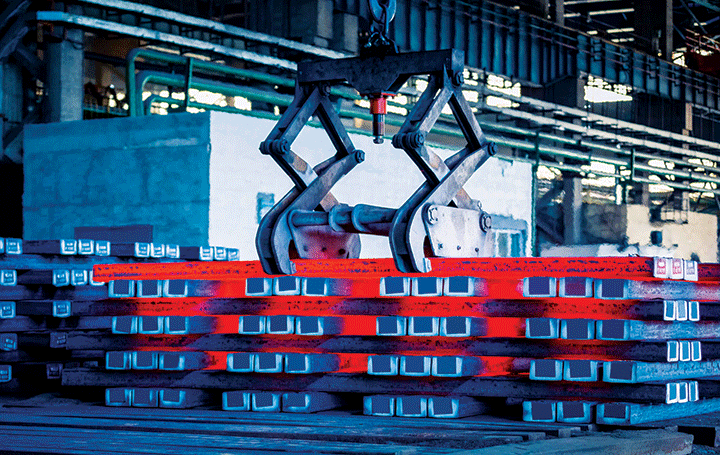India's steel consumption growth is likely to slow during the fiscal year ending March 31, 2020 as its domestic downstream industries face lower demand for their final products.
Consumption of steel in April-July was 33.706 million tons, which is about 6.6% higher than the 31.607 million tons recorded a year ago.
The 6.6% growth was less than last year. In April-July 2018, consumption was 9.7% higher than in the corresponding months of 2017.
In terms of tonnage, the increase in April-July 2019 compared to 2018 amounted to 2.099 million tons, while the corresponding increase in 2018 compared to 2017 was 2.787 million tons.
Another indicator of weaker demand was that imports and exports of metal products have been falling over the past four months. According to a report from the Indian Ministry of Steel, steel imports to the country fell by 6% to 2.496 million tons per year, while exports from the country fell by 23.5% to 1.474 million tons.
This year, the demand for steel from the automotive industry has dropped sharply. India's car production from April to July was 9.72 million units, down 10.65% year-on-year amid a cash shortage affecting credit availability and market concerns about slowing economic growth .
According to Vishnu Matyur, CEO of the Society of Automobile Manufacturers of India, the automotive industry accounts for 49% of India's GDP.
India's GDP annual growth forecast drops to 6.9%
In early August, the Reserve Bank of India (RBI) revised its GDP growth forecast for 2019-20 to 6.9% from 7% in June. In addition, RBI cut interest rates four times in 2019 to support the economy. The latest decline occurred on August 7, when the rate was cut 35 basis points to 5.4%, the lowest level since April 2010. As of August, RBI has lowered its repo rate by 110 basis points in 2019.
In addition to the slowdown in the automotive sector, the state bank said: "Construction activity declined due to a decline in cement production and a slowdown in finished steel consumption growth in June."
As a result, India is not expected to achieve 7% GDP growth over the 2019-20 fiscal period. In 2018-19, GDP growth slowed to 6.8%, the lowest level from 2014 to 2015. In January-March 2019, GDP growth reached a five-year low of 5.8%. GDP for April-June is expected at the end of August.
Other financial reports indicate a decline in economic growth. For example, in mid-August, the Banking Group of Australia and New Zealand lowered its forecast for India's economic growth to 6.2% from 6.5% earlier.
Although India's steel production has made it the world's second largest producer after China, its apparent per capita consumption of finished steel has lagged far behind other leading countries.
For example, in 2017, per capita steel consumption in India was 66.2 kg, while the leading producer of China - 549.0 kg, and South Korea was leading with 1 104.6 kg, as shown by the data of the World associations became Worldsteel. China was the sixth largest consumer of steel per capita, while India was in 85th place.
“Given the current and evolving inflation and growth scenario at this stage, it can no longer be a conventional approach. The economy needs more push, ”said Shaktikanta Das, head of RBI.




